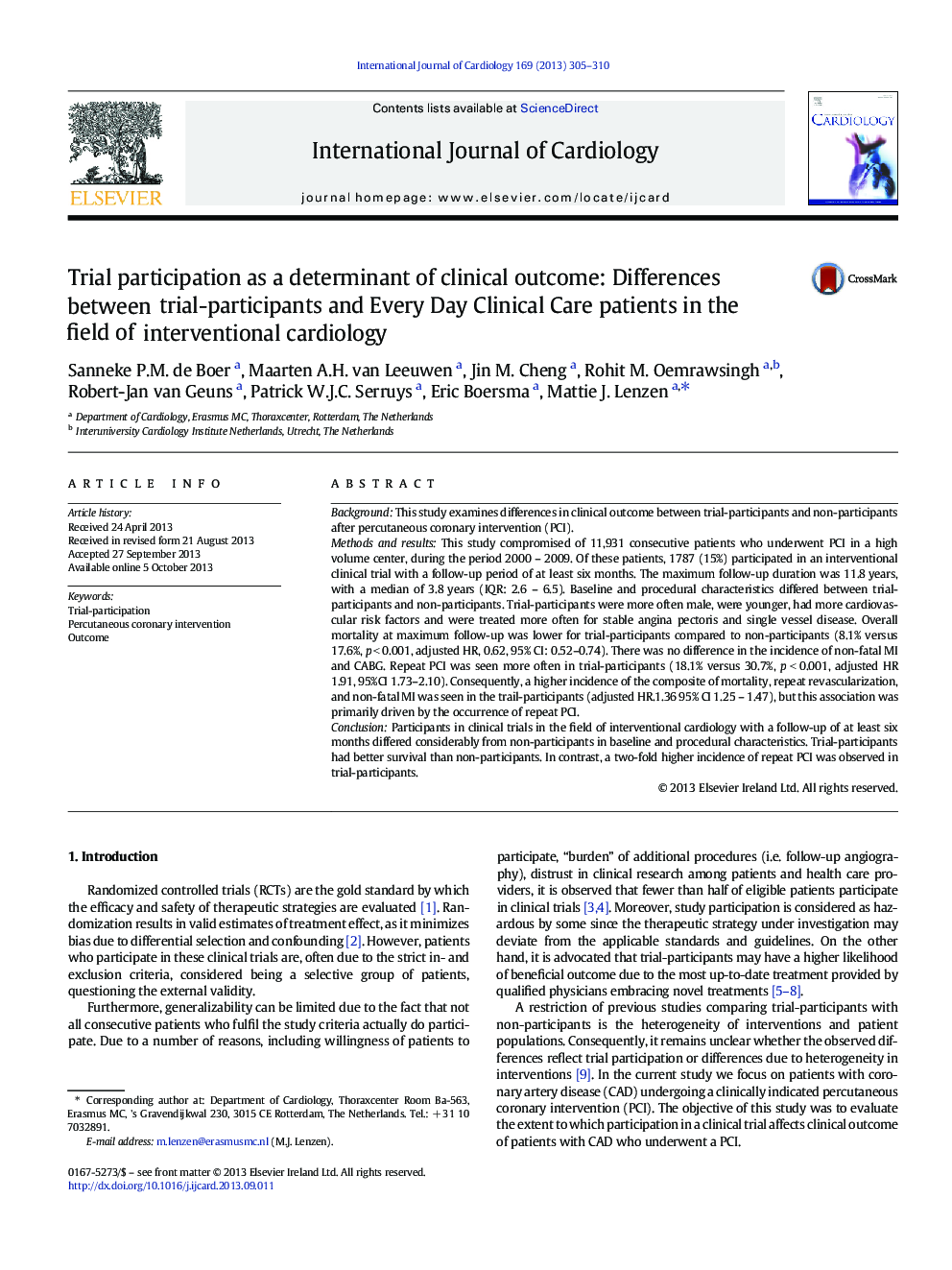| Article ID | Journal | Published Year | Pages | File Type |
|---|---|---|---|---|
| 5973995 | International Journal of Cardiology | 2013 | 6 Pages |
BackgroundThis study examines differences in clinical outcome between trial-participants and non-participants after percutaneous coronary intervention (PCI).Methods and resultsThis study compromised of 11,931 consecutive patients who underwent PCI in a high volume center, during the period 2000 - 2009. Of these patients, 1787 (15%) participated in an interventional clinical trial with a follow-up period of at least six months. The maximum follow-up duration was 11.8 years, with a median of 3.8 years (IQR: 2.6 - 6.5). Baseline and procedural characteristics differed between trial-participants and non-participants. Trial-participants were more often male, were younger, had more cardiovascular risk factors and were treated more often for stable angina pectoris and single vessel disease. Overall mortality at maximum follow-up was lower for trial-participants compared to non-participants (8.1% versus 17.6%, p < 0.001, adjusted HR, 0.62, 95% CI: 0.52-0.74). There was no difference in the incidence of non-fatal MI and CABG. Repeat PCI was seen more often in trial-participants (18.1% versus 30.7%, p < 0.001, adjusted HR 1.91, 95%CI 1.73-2.10). Consequently, a higher incidence of the composite of mortality, repeat revascularization, and non-fatal MI was seen in the trail-participants (adjusted HR.1.36 95% CI 1.25 - 1.47), but this association was primarily driven by the occurrence of repeat PCI.ConclusionParticipants in clinical trials in the field of interventional cardiology with a follow-up of at least six months differed considerably from non-participants in baseline and procedural characteristics. Trial-participants had better survival than non-participants. In contrast, a two-fold higher incidence of repeat PCI was observed in trial-participants.
